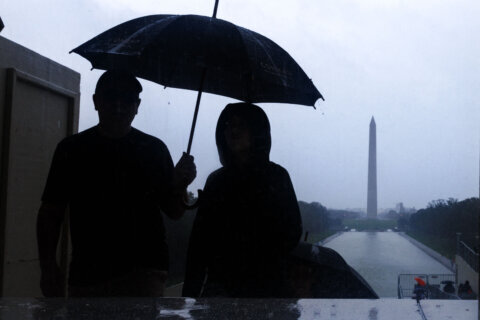ROB GILLIES
Associated Press
TORONTO (AP) — One of two British explorer ships that vanished in the Arctic nearly 170 years ago during a search for the fabled Northwest Passage has been found, Canada’s prime minister announced Tuesday in a discovery that could unlock one of history’s biggest mysteries and swell Canadian pride.
Last seen in the 1840s while under the command of Rear Adm. Sir John Franklin, HMS Erebus and HMS Terror have long been among the most sought-after prizes in marine archaeology and the subject of songs, poems and novels.
Prime Minister Stephen Harper’s office said the well-preserved wreck of one of the vessels was found Sunday with the help of a remotely operated underwater vehicle. It was 11 meters (yards) below the surface, near King William Island, about 1,200 miles northwest of Toronto.
Harper said that it is unclear which ship it is, but that sonar images yielded enough information to confirm it was one of Franklin’s.
“This is truly a historic moment for Canada,” said Harper, who was beaming, uncharacteristically. “This has been a great Canadian story and mystery and the subject of scientists, historians, writers and singers, so I think we really have an important day in mapping the history of our country.”
Harper said the discovery would shed light on what happened to Franklin’s crew.
Franklin and 128 hand-picked officers and men disappeared after setting out in 1845 for the Northwest Passage, the long-sought shortcut to Asia that supposedly ran from the Atlantic to the Pacific by way of the harsh, ice-choked Arctic.
Historians believe the ships were lost in 1848 after they became locked in the ice near King William Island and the crews abandoned them in a hopeless bid to reach safety. Inuit lore tells of “white men who were starving” as late as the winter of 1850 on the Royal Geographical Society Island.
For many years afterward, Franklin was celebrated as a Victorian-era hero.
Dozens of searches by the British and Americans in the 1800s failed to locate the wrecks, and some of those expeditions ended in tragedy, too. But they opened up parts of the Canadian Arctic to discovery and ultimately spied a Northwest Passage, though it proved inhospitable to shipping because of ice and treacherous weather.
Canada announced in 2008 that it would look for the ships, and Harper’s government has poured millions into the venture, with the prime minister himself taking part in the search.
Harper’s government made the project a top priority as it looked to assert Canada’s sovereignty over the Northwest Passage, where melting Arctic ice in recent years has unlocked the very shipping route Franklin was after.
Canada says it owns the passage. The U.S. and others say it is international territory.
Ryan Harris, an underwater archaeologist helping to lead the Parks Canada search, said a sonar image shows some of the ship’s deck structures, including the main mast, which was sheared off by the ice when the vessel sank. He said the contents of the ship are most likely in the same good condition.
The next step is to send divers to explore the ship and any artifacts. There is no current plan to raise it. Divers will see what kind of condition the hull is in. The exact location of the wreck was not disclosed for fear of looters.
The discovery came shortly after a coast guard helicopter pilot spotted a dark, U-shaped object in the Arctic snow. The orange-brown hunk of metal bore the markings of the Royal Navy. It was a davit — part of a lifting mechanism, likely for a lifeboat, for one of the two lost Franklin ships, the search team said.
“That’s the clue that tells you: Look here. That’s the flag,” said John Geiger, president of the Royal Canadian Geographical Society. Geiger was with the search team.
Andrew Campbell, a vice president at Parks Canada, said a combination of previous Inuit testimony, past modeling of ice patterns by the Canadian Ice Service, and the measurements of the two lost vessels — they are so similar they can’t yet be told apart — convinced the searchers that this was a Franklin ship.
When the search team telephoned Campbell in Ottawa with the news early Sunday, “they cried, I cried. It was quite a moment,” he said.
Queen Elizabeth II issued a statement saying she was “greatly interested to learn of the discovery of one of the long-lost ships of Captain Sir John Franklin” and she congratulated “all those who played a part in this historic achievement.”
Other tantalizing traces have been found over the years, including the bodies of three crewmen discovered in the 1980s. Among them was a petty officer whose perfectly preserved remains were in an ice-filled coffin.
The search for an Arctic passage to Asia frustrated explorers for centuries, beginning with John Cabot’s voyage in 1497. The shortcut eluded other famous explorers, including Henry Hudson and Francis Drake.
No sea crossing was successful until Roald Amundsen of Norway completed his trip in 1903-06.
Copyright 2014 The Associated Press. All rights reserved. This material may not be published, broadcast, rewritten or redistributed.







